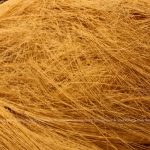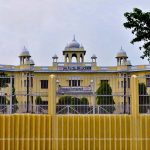The Sher Darwaza
A Gateway To Lucknow’s Revolt
While moving from Sa’adat Ali Khan’s Tomb to the gardens crowned with the white marble statue of Queen Victoria, stands an unassuming gateway once known as the Sher Darwaza or Tiger Gateway. About a hundred years ago it gave on to a courtyard. A maze of narrow streets and alleyways wove around the rickety houses; staggered steps led to pools of stagnant water. Dirt and disease lurked in every corner. Near the gateway stood a building dedicated to the twelve Imams, the descendants of Ali, the son-in-law of the Prophet.
When the British Raj assumed the control of Oudh, this web of dwellings was swept away leaving only the Sher Darwaza and was renamed as Neil’s Gateway due to the prevailing circumstances in the city. Brigadier-General J.G.S. Neil, C.B., A.D.C. to the Queen, belonged to the 1st Madras Fusiliers. In 1857 Neil, with his ìLambsî was sent from Calcutta to deal with the obstinate inhabitants of Benares, Allahabad and Cawnpore. He finally arrived in Lucknow with the first relief column.
At half past eight on the morning of September 25, 1857, the advance sounded, and Neil’s Brigade, headed by Maude’s Battery and two companies of the 5th Fusiliers, led the column and moved off from the Alambagh towards the Yellow House. At the Charbagh canal, the bridge which was strongly held by the rebels checked them. In the confined streets there was only room for two of Maude’s guns to come into action and the gunners suffered heavily under fierce fire. Maude and his subaltern, Maitland, both took active part in firing the guns. Young Havelock, son of the General and A.D.C. to his father, was standing when Maude called out that he could not hold out much longer. Young Havelock rode over to General Neil with the message, but the General refused to attack without authority saying, ìGeneral Outram must turn up soonî. The story goes that the son wheeled his horse and galloped in the direction where his father was supposed to be. In a few suspiciously short minutes, he returned, bringing a verbal ìmessageî that General Neil was to carry the bridge at once. Another version says that Colonel Fraser Tytler, D.A.Q.M.G. of the column, persuaded Neil to attack. In any case, the 1st Madras Fusiliers were ordered to assault.
Lieutenant W.D. Arnold hastened on to the bridge closely followed by his own men and a few of the 84th. Tytler and Lieutenant Havelock also rode up but Tytler’s horse was killed under him. Havelock escaped unscathed although he stood dismounted in the middle of the bridge waving his sword and encouraging his men. Arnold was shot in both thighs, but was made happy in the knowledge that the charge led by him carried the bridge and assured the success of the day.
On September 27, Mr. Thornhill of the Bengal Civil Service, who had been in the residency all through the siege, volunteered to go and bring in the wounded. He had previously been Assistant Commissioner of Lucknow and knew his way about. Somehow, having collected as many of the wounded as he could, he lost his way back to the residency and by mistake, guided the long chain of palanquins, filled with helpless wounded men, into the square near the Sher Darwaza. Here they were set up by many to be murdered. The insurgents set fire to the palanquins, so that many poor sufferers were burned to death.
As Mr. Thornhill had realized his mistake he rushed back to stop the rear of the column from entering the square, but as he ran he was wounded for the third time during the siege, in the arm and the eye. He died on October 12. Lieutenant Arnold, wounded on the Charbagh Bridge, was lying in one of the palanquin carried into the Palanquin Square, and although he escaped the massacre, he died a few days later. Two private soldiers, Ryan and McManus, made heroic efforts to save him, both being awarded the VC. Lieutenant Arnold is believed to have been the son of the famous Dr. Arnold, Headmaster of Rugby.
The next day the site was again the scene of fierce fighting. As the evening wore on, from the top of the Sher Darwaza, a shot was fired which mortally wounded General Neil. At the place where he fell, stands a small monument inscribing “Dulce et decorum est pro patria mori”, with the name of Neil and the manner of his death.
At Ayr, where his family traces their descent from the 16th century, a memorial describes him as “a brave, resolute, self-reliant soldier”, universally acknowledged as the first who stemmed the torrent of rebellion in Bengal. Over his remains a memorial has been erected in the Residency cemetery to the officers and men of the 1st Madras Fusiliers who fell with him in Lucknow. Further along Neil’s road, nearly opposite Kothi Nur Baksh, is a memorial on which various names are inscribed.
On June 13, 1857, the 41st Native Infantry mutinied at Sitapur and killed Colonel Birch, their commanding officer and other officers, before making off to Fatehgarh. The other regiments in Sitapur immediately followed suit. The Europeans who remained made the best of their way across the river. Fourteen men, women and children reached Lucknow on June 8 and 10, but others who took refuge with Raja Lone Singh at Mitauli were turned up by him on August 6, and wandered about evading capture in the jungles until the end of October, when some three hundred of the Raja’s troops arrested them.
Sir Mountstuart Jackson, aged nineteen, Assistant Commissioner of Sitapur, Captain Patrick Orr and Lieutenant Burnes were loaded with irons. They, and the women and children with them, including one of Sir Mountstuart’s two sisters, who had only lately arrived in India, were taken to Lucknow. There they were imprisoned in a tiny hovel within the Qaiserbagh. On November 16, the men were taken away and shot by some of the deserters from the 71st Regiment.
Mrs. Harris, in her diary of the siege written within the Residency, says on June 27: “Eleven persons, ladies and gentlemen, escaped from Seetapore and are hiding in the jungles protected by a Rajah who is very civil to them, and the two Miss Jacksons and their brother are among them. It was positively asserted that they had been killed at Seetapore, the natives declaring they had seen their dead bodies, which leads one to hope that others may be found alive some day.”
In 1858 Mrs. Harris added a postscript: “Only one of the Miss Jacksons escaped with her brother; the other was taken by a Rajah and has never been since heard of. Sir M. Jackson and his poor sister are still prisoners in Lucknow.”
Siddhant Agarwal
Writer is an avid reader. Writing short stories and debating are his interests.
(Published in The Lucknow Observer, Volume 2 Issue 16, Dated 05 July 2015)

Neil Gate (Sher Darwaza)




